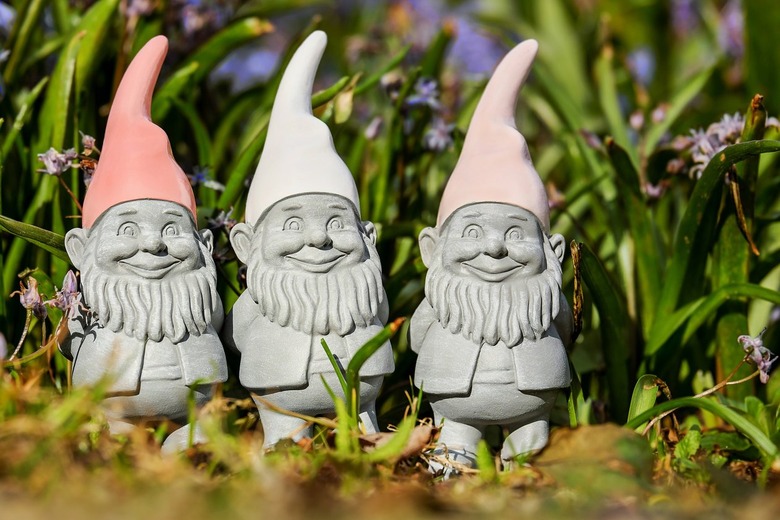Why Do People Put Gnomes In Gardens?
When it comes to decorative garden accessories, some people go for realistic sculptures of wildlife, while others opt for something more abstract, like a whimsical iridescent orb. But the most famous of all lawn ornaments is the humble garden gnome, a funny little character that has both historic depth and popular culture cachet.
Here's everything you ever wanted to know about garden gnomes, from their origins in myths and literature to the reason why people love to stick them in their gardens.
What Is a Gnome?
What Is a Gnome?
A gnome is a folkloric creature that looks like a miniature version of a dwarf. "According to German folklore, gnomes were thought to live underground and were described as elderly men who guarded treasure," Leslie Vincent, a gardening expert at Irish garden and farm center Atkins, tells Hunker.
The History of Garden Gnomes
The History of Garden Gnomes
Mythical beings like gnomes have pervaded cultures around the world for millennia. In Ancient Rome, people would put small statues of the fertility god Priapus in their gardens for good fortune.
But the contemporary gnome — that is, the ceramic garden sculpture with the little red or green hat — was allegedly developed in the 1880s by German artist Philip Griebel, whose family-run workshop in Graefenroda, Germany, still produces handmade gnomes.
These garden gnomes grew in popularity quickly, particularly in England, when lawyer Sir Frank Crisp opened his eccentric estate Friar Park, on which the grounds were filled with gnomes, to the public in the early 20th century. (George Harrison of Beatles fame would go on to purchase the house — a photograph of its gnomes is featured on the cover of his album All Things Must Pass.)
Why Do People Put Gnomes in Gardens?
Why Do People Put Gnomes in Gardens?
"Thought to be underground treasure guardians, and therefore guardians of plant root health, gnomes were respected with offers of food or clothing which were left out overnight to appease or thank them," gardener Clive Harris of DIY Garden tells Hunker.
"Historically, gnomes have always been thought of as good luck. In more spiritual times, they were thought to protect your home, property, livestock, or crops, watching over them to prevent thieves and pests from wreaking havoc," Thomas O'Rourke, editor in chief of Horticulture Magazine, tells Hunker. "In recent times, I feel they are mostly used in gardens for playfulness and light-hearted humor, with novelty gnomes proving very popular in modern spaces."
Garden Gnomes in Popular Culture
Garden Gnomes in Popular Culture
In the 1980s, an unusual phenomenon called "gnoming" began making headlines around the world. According to O'Rourke, gnoming is "the practice of 'stealing' a garden gnome, taking it on a journey, and then returning it to its owner — with plenty of photographs!" He adds that it was revived in the early 2000s thanks to the film Amélie and still exists today.
The traveling gnome concept has even been incorporated into a viral marketing campaign by booking website Travelocity featuring a character called the "Roaming Gnome."
But traveling gnomes are not the only gnomes to make it onto the screen. "We have had several recent animated films that were inspired by garden gnomes," says O'Rourke. "The first was Shakespeare-oriented and aptly titled Gnomeo and Juliet, with the sequel Sherlock Gnomes — an equally well-thought-out title!"
Even before that, there was the Spanish program David, el Gnomo, which ran in the 1980s before being dubbed in English as The World of David the Gnome.
Who would have thought that garden gnomes would have such a long, storied history and still be popular to this day?

